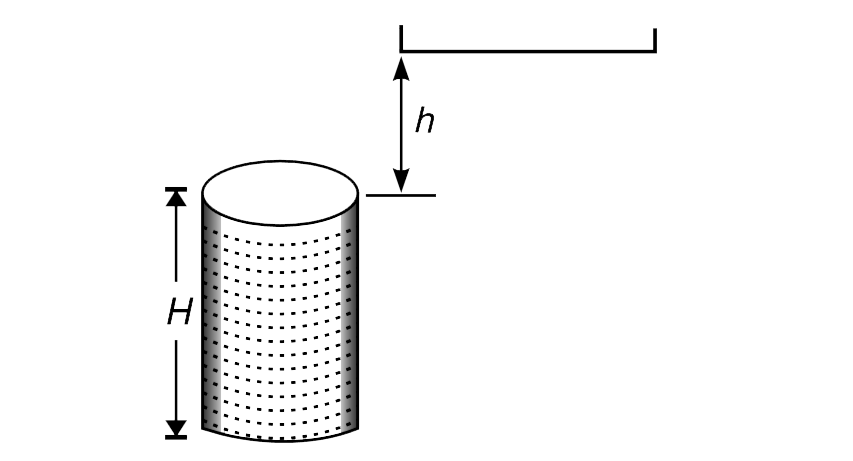Water can be lifted into the water tank at the top of the house with the help of a pump . Then why is not considered to be spontaneous ?
To understand why lifting water into a tank with a pump is not considered a spontaneous process, we can break down the explanation into several steps:
1. Definition of Spontaneous Processes:
- A spontaneous process is one that occurs naturally without the need for external energy. It happens on its own due to the inherent properties of the system and its surroundings.
2. Definition of Non-Spontaneous Processes:
- A non-spontaneous process requires external energy or work to occur. This means that some form of energy input is necessary to drive the process.
3. Lifting Water with a Pump:
- When water is lifted to the top of a house using a pump, energy is required to perform this work. The pump consumes electrical energy (or mechanical energy) to lift the water against the force of gravity.
4. Energy Considerations:
- In thermodynamics, we often use the Gibbs free energy (ΔG) to determine the spontaneity of a process.
- If ΔG is less than zero (ΔG < 0), the process is spontaneous. If ΔG is greater than zero (ΔG > 0), the process is non-spontaneous.
5. Application to the Pumping of Water:
- In the case of lifting water with a pump, the process requires energy input (work done by the pump). Therefore, it does not occur spontaneously and is classified as a non-spontaneous process.
6. Conclusion:
- Since lifting water requires external energy input, it is not a spontaneous process. Instead, it is a non-spontaneous process because it cannot happen without the aid of the pump.
- A spontaneous process is one that occurs naturally without the need for external energy. It happens on its own due to the inherent properties of the system and its surroundings.
- A non-spontaneous process requires external energy or work to occur. This means that some form of energy input is necessary to drive the process.
- When water is lifted to the top of a house using a pump, energy is required to perform this work. The pump consumes electrical energy (or mechanical energy) to lift the water against the force of gravity.
- In thermodynamics, we often use the Gibbs free energy (ΔG) to determine the spontaneity of a process.
- If ΔG is less than zero (ΔG < 0), the process is spontaneous. If ΔG is greater than zero (ΔG > 0), the process is non-spontaneous.
- In the case of lifting water with a pump, the process requires energy input (work done by the pump). Therefore, it does not occur spontaneously and is classified as a non-spontaneous process.
- Since lifting water requires external energy input, it is not a spontaneous process. Instead, it is a non-spontaneous process because it cannot happen without the aid of the pump.
Topper's Solved these Questions
- BOOK - PRADEEPCHAPTER - THERMODYNAMICSEXERCISE - NCERT QUESTIONS AND EXERCISES WITH ANSWERS22videos
THERMODYNAMICS
- BOOK - PRADEEPCHAPTER - THERMODYNAMICSEXERCISE - NCERT SUPPLEMENTARY EXERCISE6videos
THERMODYNAMICS
- BOOK - PRADEEPCHAPTER - THERMODYNAMICSEXERCISE - CONCEPTUAL QUESTIONS( II. First law of thermodynamics)1videos
THERMODYNAMICS
- BOOK - PRADEEPCHAPTER - STRUCTURE OF ATOMEXERCISE - Competition Focus (JEE (Main and Advanced)/Medical Entrance (IX. Assertion And Reason Type Questions (Type II))12videos
STRUCTURE OF ATOM
Similar Questions
Knowledge Check
- Question 1 - Select One
Why copper is used to make hot water tanks and not steel?
ACopper is a cheap resourceBCopper allows the water tank to remain hot for a longer timeCSteel (iron) is more reactive than copper when comes in contact with steamDSteel is an alloy of Iron which requires low temperature to remain in its usual form - Question 2 - Select One
Why copper is used to make hot water tanks and not steel?
ACopper is a cheap resourceBCopper allows the water tank to remain hot for a longer timeCSteel (iron) is more reactive than copper when comes in contact with steamDSteel is an alloy of iron which requires low temperature to remain in its usual form - Question 3 - Select One
Why does water tank appear shallower when viewed from the top ?
Aa) Due to reflectionBb) Due to refractionCDue to diffractionDd) Due to total internal reflection
The surface of water in a water tank on the top of a house is 4 m above the tap level. Find the pressure of water at the tap, above atmospheric pressure, when the tap is closed. Is it necessary to specify that the tap is closed? Take g=10ms−2
View SolutionA completely filled cylinderical tank of height H contains water of mass M. At a height h above the top of the tank there is another wide container. The entire water from the tank is to be transferred into the container in time t0 such that level of water in tank decreases at a uniform rate. How will the power of the external agent vary with time?
 View Solution
View SolutionWater in a swimming pool or water tank appears shallower than its depth. Why ?
View SolutionWhy does water from the soil rise to the top of a tall tree?
View SolutionThe temperature of water at the bottom of a waterfall is higher than that of the water at the top, because
View Solution

